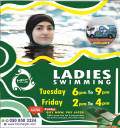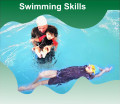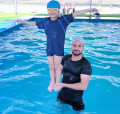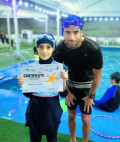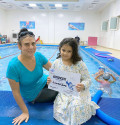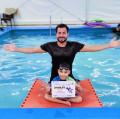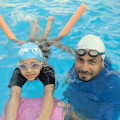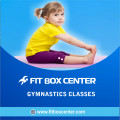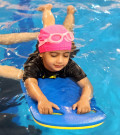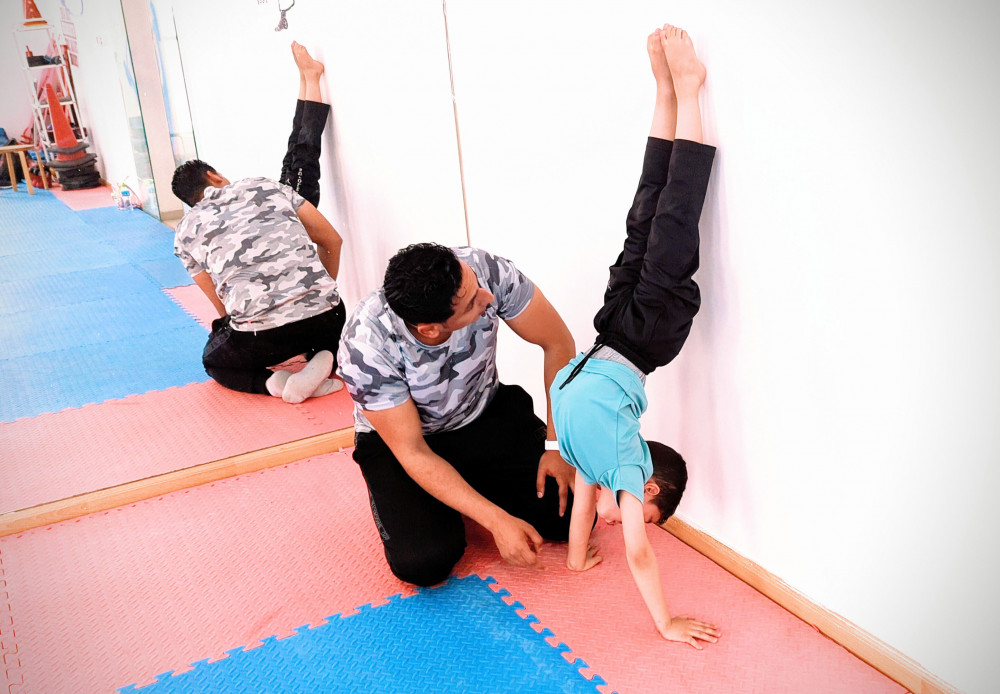
Gymnastics for Kids Let's Learn Handstand method
2023-12-07 - gymnasticGymnastics isn't just a sport; it's a gateway to a world of
physical, cognitive, and emotional development for children. In this article,
we'll delve into the exciting realm of gymnastics for kids, focusing on a
fundamental skill – the handstand.
I. Introduction
Importance of Physical Activity for Kids
In the age of screens and sedentary lifestyles, fostering
physical activity in children is crucial. It not only contributes to their
overall health but also sets the foundation for lifelong habits.
Introduction to Gymnastics for Children
Gymnastics stands out as an ideal sport for kids, promoting
strength, flexibility, and coordination. It goes beyond physical prowess,
enhancing cognitive abilities and instilling valuable life skills.
II. Benefits of Gymnastics for Kids
Physical Development
Gymnastics engages various muscle groups, fostering the
development of strength, balance, and agility. It lays the groundwork for a
healthy and active lifestyle.
Cognitive Benefits
Beyond the physical, gymnastics challenges the mind. It
improves concentration, spatial awareness, and problem-solving skills,
contributing to holistic cognitive development.
Social and Emotional Growth
Participating in gymnastics provides children with
opportunities to interact, cooperate, and build friendships. It nurtures
resilience, discipline, and emotional intelligence.
III. Focus on Handstand in Gymnastics
Basics of Handstand
The handstand is a fundamental gymnastic skill that promotes
upper body strength and balance. It forms the basis for advanced maneuvers and
instills confidence in young gymnasts.
Safety Considerations
Before diving into handstand practice, ensuring a safe
environment is paramount. Proper coaching, suitable equipment, and supervision
are essential components of injury prevention.
Progression Steps
Introducing handstand progression steps gradually allows
children to build strength and confidence. Starting with wall-assisted
handstands and advancing to freestanding ones ensures a structured learning
curve.
IV. Preparing Your Child for Handstand
Warm-up Exercises
A thorough warm-up is crucial to prevent injuries and
enhance flexibility. Incorporating dynamic stretches and simple exercises
primes the body for handstand practice.
Building Strength
and Flexibility
Handstands demand upper body strength and flexibility.
Tailoring exercises to target these areas ensures that children are adequately
prepared for the challenges ahead.
Importance of
Proper Coaching
Enrolling your child in a reputable gymnastics program with
experienced coaches ensures they receive proper guidance. Personalized feedback
accelerates skill acquisition while minimizing the risk of injury.
V. Fun and Engaging Handstand Drills
Incorporating Games into Practice
Making handstand practice enjoyable is key to keeping kids
engaged. Games that incorporate handstand drills not only make learning fun but
also develop a sense of camaraderie among participants.
Encouraging
Creativity
Allowing children to express themselves through creative
handstand variations fosters a love for the sport. It also enhances their sense
of accomplishment as they see their unique ideas come to life.
Making Learning Enjoyable
Gymnastics should be a source of joy for children.
Incorporating elements of play and imagination into lessons ensures that kids
look forward to their gymnastics sessions.
VI. Addressing Common Challenges
Fear and Anxiety
Some children may be apprehensive about attempting handstands.
Patient encouragement, positive reinforcement, and breaking down the skill into
manageable steps can help overcome fear and anxiety.
Handling Physical Limitations
Every child is unique, and some may face physical
limitations. Coaches should adapt training programs to accommodate individual
needs, ensuring that every child can participate and progress.
Patience and Perseverance
Gymnastics teaches valuable life lessons, and one of the
most important is the virtue of patience. Emphasizing the journey over the
destination instills a growth mindset in young gymnasts.
VII. Setting Realistic Goals
Age-Appropriate Milestones
Setting realistic milestones ensures that children
experience success at every stage. Progressing gradually through skill levels
builds confidence and maintains enthusiasm for the sport.
Celebrating Achievements
Acknowledging and celebrating each achievement, no matter
how small, motivates children to continue their gymnastics journey with
enthusiasm and a positive mindset.
Encouraging a Positive Mindset
Fostering a positive attitude is as important as mastering
physical skills. Instilling confidence and resilience in young gymnasts
contributes to their overall well-being.
VIII. Safety Measures in Gymnastics
Importance of Supervised Practice
Children should always practice gymnastics under the
supervision of qualified coaches. Their expertise ensures that safety protocols
are followed, minimizing the risk of injuries.
Choosing the Right Equipment
Using age-appropriate and well-maintained equipment is vital
for safety. Regular inspections and proper maintenance guarantee a secure
environment for gymnastic activities.
Regular Check-Ups and Assessments
Periodic check-ups and assessments help identify any
potential issues early on. Regular communication between coaches, parents, and
healthcare professionals ensures a holistic approach to the child's well-being.
IX. Creating a Supportive Environment
Involving Parents and Guardians
Parents play a crucial role in supporting their child's
gymnastics journey. Involvement in practice sessions, attending competitions,
and providing emotional.







.jpg)





















































